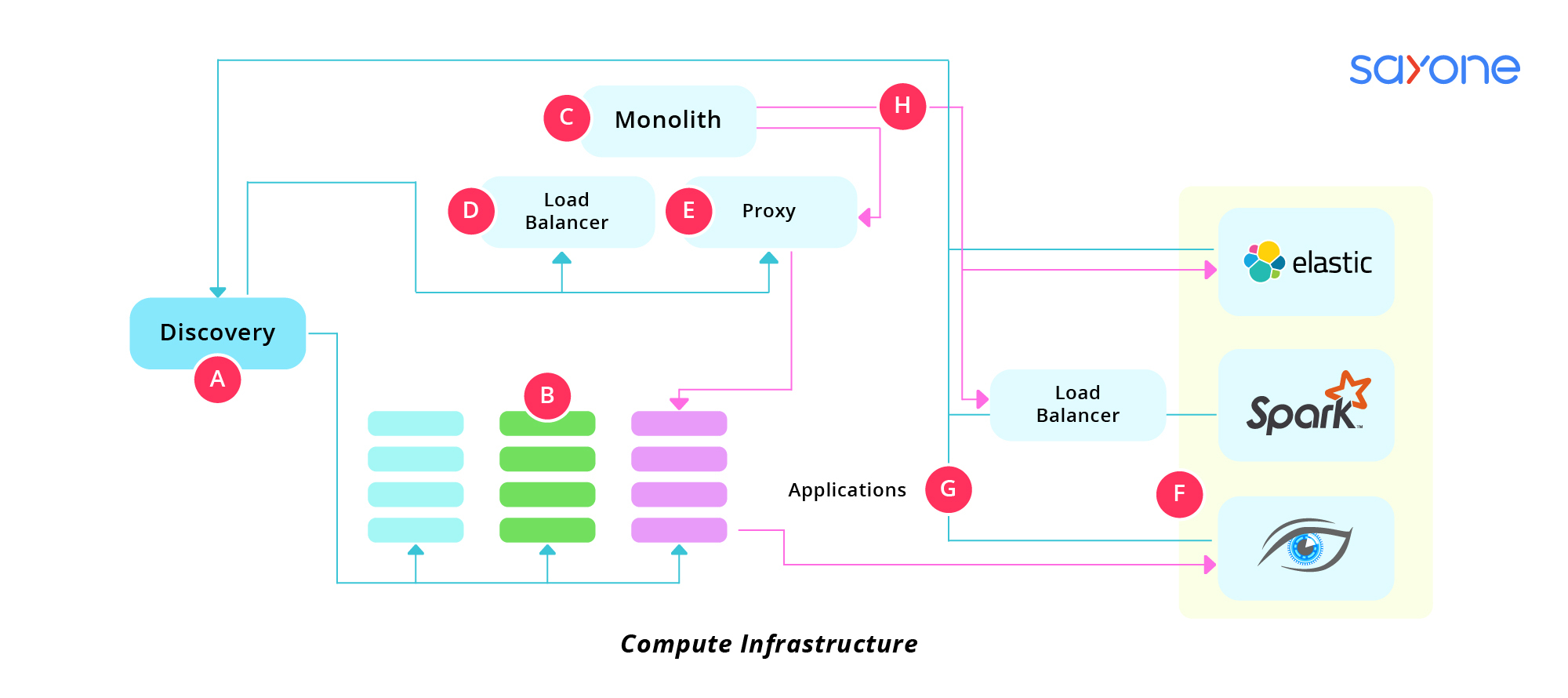
Subscribe to our Blog
We're committed to your privacy. SayOne uses the information you provide to us to contact you about our relevant content, products, and services. check out our privacy policy.

Jibu JamesOctober 26, 20214 min read

Generating table of contents...
The decision to move to a microservices architecture is very crucial as it leads to a change not only in web application development but also in its delivery. That’s why it is important to put in place a dedicated program to streamline practices and develop features that support microservices application development. There are different approaches when it comes to implementing microservices, but setting up models makes it easier for developers to quickly create and deliver microservices-based applications. This is what has led to the development of the Reference Architecture Microservices.
Businesses that have successfully shifted to microservices have adopted several common architectural patterns. As such, the reference architecture microservices have been developed in consultation with many of these businesses and after studying the design patterns documented by them. Further, according to Statista, 85 percent of the respondents from large enterprises having 5,000+ employees are currently using microservices. This shows that bigger organizations are more likely to benefit from microservices implementation.
Are you looking to outsource microservices development? Call us today!

The function of the service discovery component is to record logical service names on physical addresses. This means microservices make use of this component to find the physical addresses of various services.
Microservices are deployed in numerous instances to ensure availability and reliability. A local library contained in each microservice controls the communication between different microservices. Besides, the additional functionality implemented by the local library for microservices includes tracing, logging, and configuration.
Read our blog "Microservices Architecture Security Best Practices and Patterns"
As most businesses already have a monolithic code base, they often implement microservices in stages. This means that the existing system is also an important component of microservices.
The function of the component ‘load balancer’ is to distribute the requests it receives between the monolith’s available instances. The monolith stays behind the ‘load balancer’.
A local proxy enables the routing of the requests coming from the monolith as it receives up-to-date information about the location of various microservices via the service discovery component. The reason for using the proxy is to eliminate the need to modify the monolith.
Applications, often developed by third parties, perform specialized functions like search or persistence. In service discovery, these applications have static entries. Further, the applications may be located behind the load balancer.
Download and read our ebook "Porting from Monoliths to Microservices – Is the shift worth it?"
Microservices send as well as receive metadata such as heartbeat data, routing information, logging data, and much more. The metadata is shared by way of a logical layer referred to as the Control Layer.
Additionally, microservices send and receive messages and actually process requests. The logical layer over which messages are sent is referred to as the Traffic Layer. Further, the control layer manages the specific routes over which messages traverse in the traffic layer.
Reference architecture microservices can be a powerful tool that can be used to develop secure, robust, fast and reliable microservices. The use of this tool can save the entrepreneur from costly mistakes and loss of precious time.
We are experts in designing and implementing microservices-based applications without complex architectural layers. This enables the services to deliver exceptionally fast performance. Besides, we focus on providing decoupled services that allow you to launch services independently and prevent the inter-dependent microservices from working like a monolith.
At SayOne Technologies, we design the microservices by maintaining the margin needed to enable transitioning from legacy architecture to the new system and expanding into the cloud system. We employ lightweight code when developing microservices and offer competitive pricing options.
Furthermore, we build microservices as per the latest international security guidelines so that the safety of data is ensured. In addition, we deliver services within the specified deadlines. Finally, we are fully equipped with the best infrastructure and the latest tools and technologies to deliver the best microservices so that it is easy for our clients to easily scale up operations and boost their ROI in the shortest possible period of time.
If you are ready to shift to the microservices architecture, you can talk to one of our experts today!

We're committed to your privacy. SayOne uses the information you provide to us to contact you about our relevant content, products, and services. check out our privacy policy.

About Author
Jibu James is the Team Lead at SayOne Technologies. He is passionate about all things related to reading and writing. Check out his website or say Hi on LinkedIn.

We collaborate with visionary leaders on projects that focus on quality